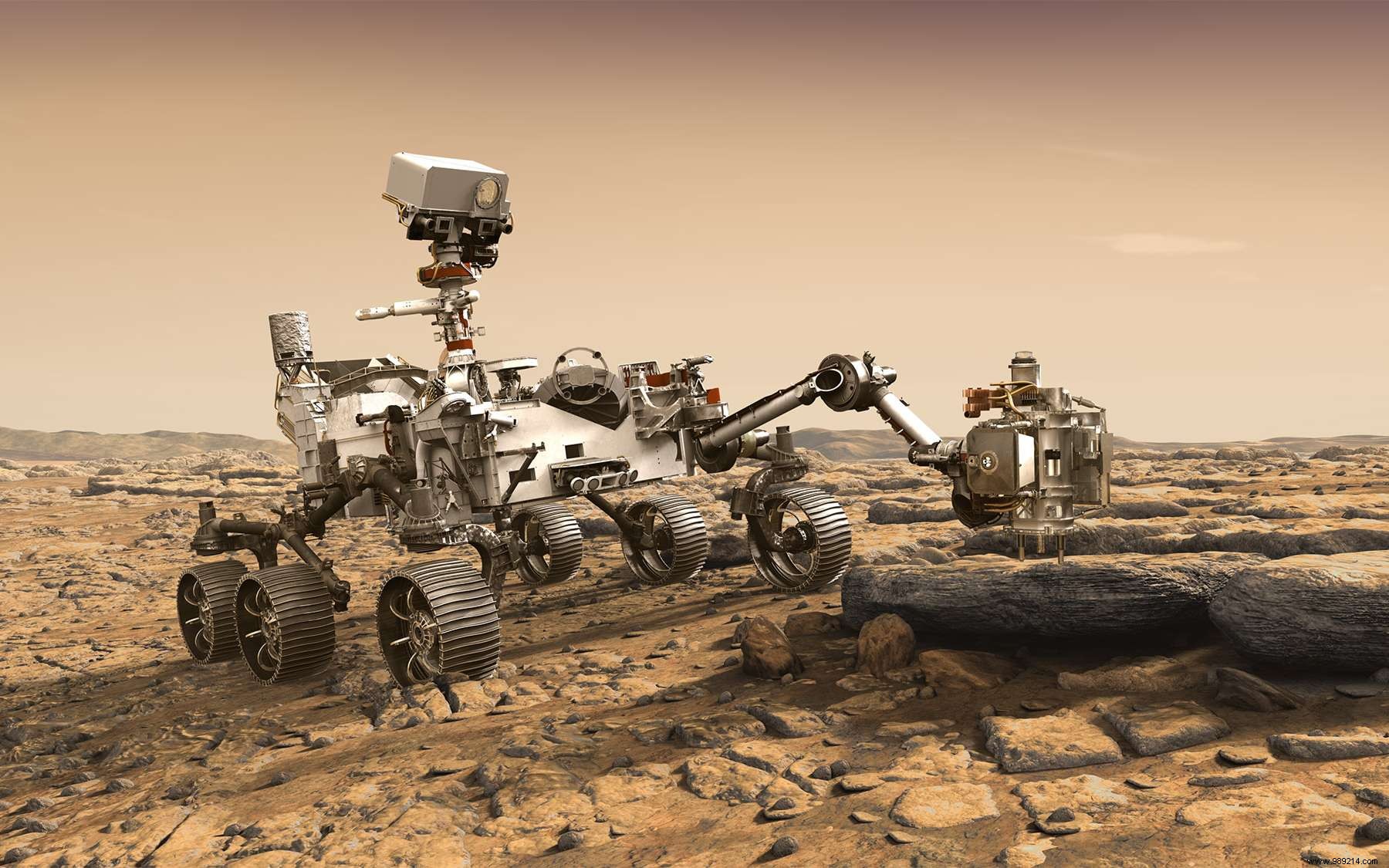In the belly of Perseverance is a small box that, if all goes well, will turn part of the red planet's carbon dioxide-rich atmosphere into oxygen. The experiment will aim to demonstrate technology that could one day support a manned mission to Mars.
The Journey of Perseverance in the direction of Mars is almost complete, with a landing scheduled for this Thursday, February 18 in the Jezero crater . Focus today on the small golden box comfortably installed in the belly of the rover:the Mars Oxygen In-Situ Resource Utilization Experiment or MOXIE , an experiment to produce a small amount of oxygen pure from Martian atmospheric carbon dioxide. A bit like trees, ultimately, which are based on much more complex processes.
This is a demonstration of technology that should ultimately allow future Martian explorers to breathe, naturally, but also and above all to fill the tanks oxygen they will need to return to Earth.
Note that MOXIE does not fulfill one of the main purposes of the Perseverance rover which is to search for traces of past life. So, as a demonstration of technology, this little golden box will only work occasionally (maybe once every few months).
Another reason, and not the least, the technology requires a significant energy input in order to heat a key element of the experiment to around 800°C . Each time MOXIE runs, the instrument will spend about two hours warming up and then produce oxygen for about an hour. This process will use most of the rover's power supply for the day .

To operate, the instrument will extract carbon dioxide from the thin Martian atmosphere, then separate the carbon from the oxygen . MOXIE will produce carbon monoxide gas as a by-product, so it can easily dissipate.
Of course, this won't be an easy task. First, MOXIE will not have to use up all the carbon dioxide absorbed, at the risk of producing carbon soot instead of carbon monoxide, which could clog its instruments.
Another danger:if the instrument does not receive enough electricity, the reaction will reverse. In other words, MOXIE will work like a fuel cell. Instead of drawing oxygen from CO2, it will attempt to produce CO2 from oxygen. And since there is no source of oxygen on Mars, it will begin to extract the famous gas from the anode side of the device, which will break down the material.

MOXIE is intended to test this technique of producing oxygen only on a small scale . This is indeed all that researchers can afford, since Perseverance offers only 110 watts of power available for the entire rover. By comparison, a full-fledged oxygen plant would produce about two hundred times as much oxygen and would probably require about thirty kilowatts of power.
If the demonstration is successful, then we could imagine a much larger technology launched upstream of the first manned launches to Mars, the time to produce enough oxygen to be sure that astronauts can return home, even before they leave Earth.